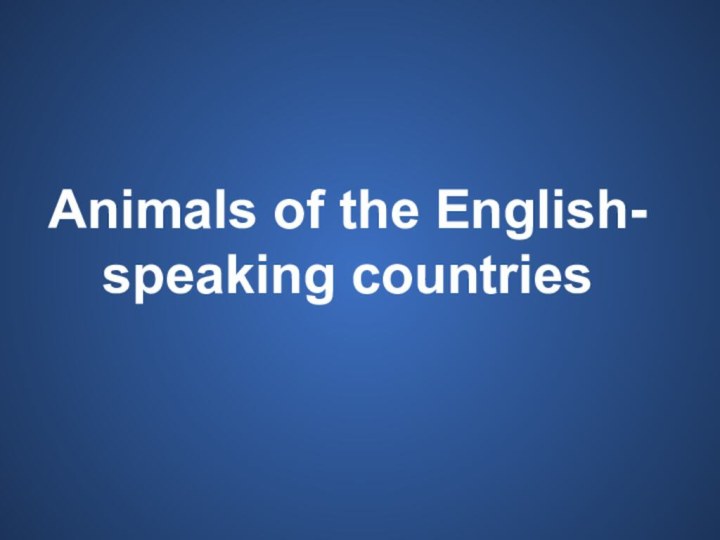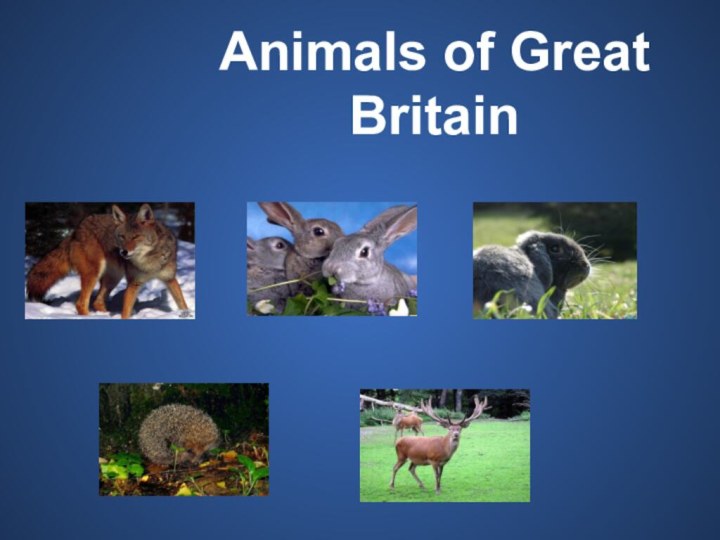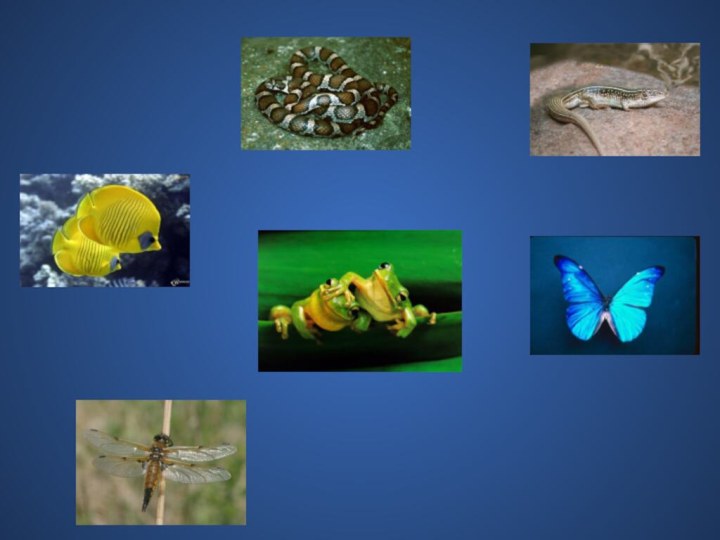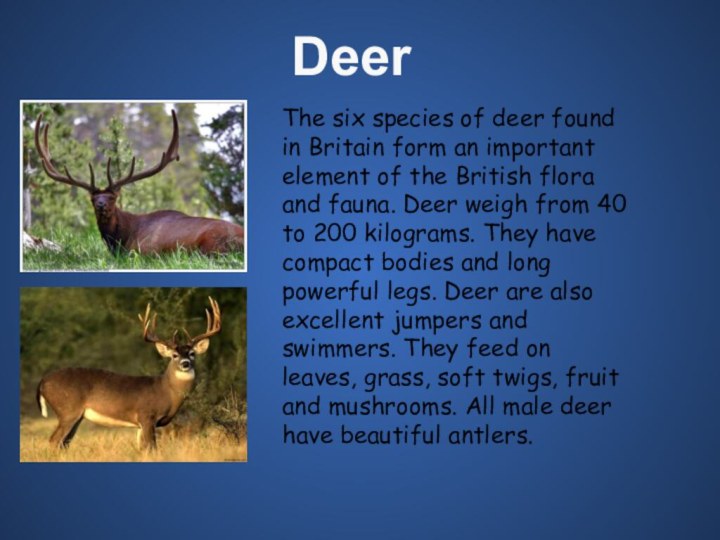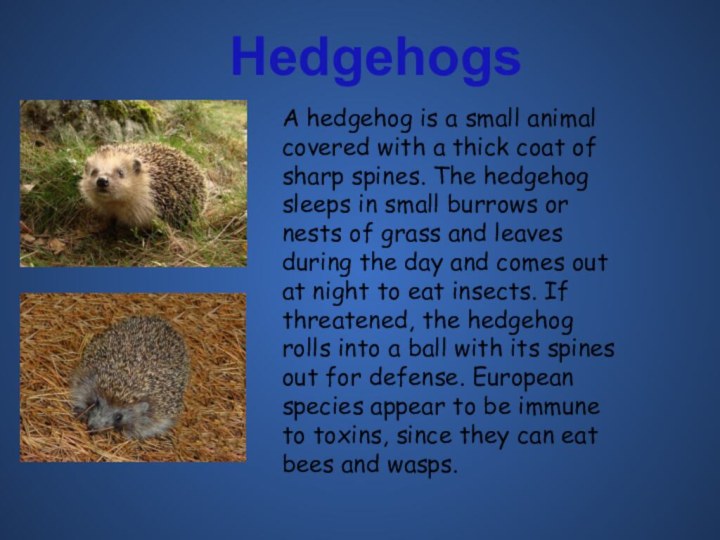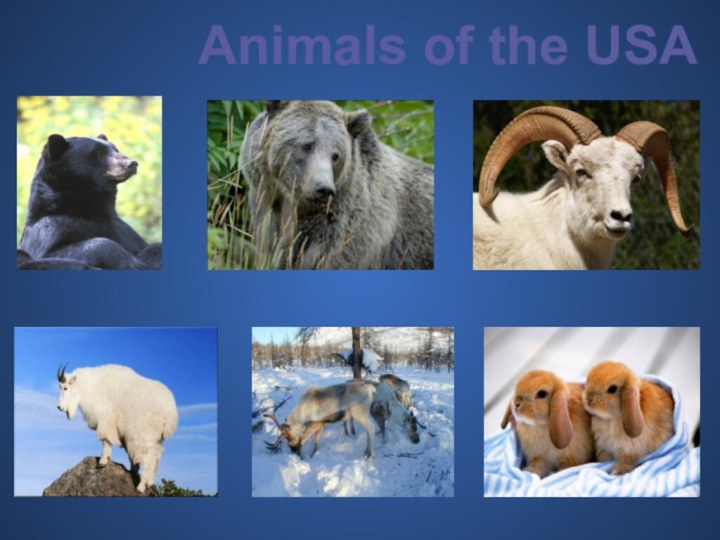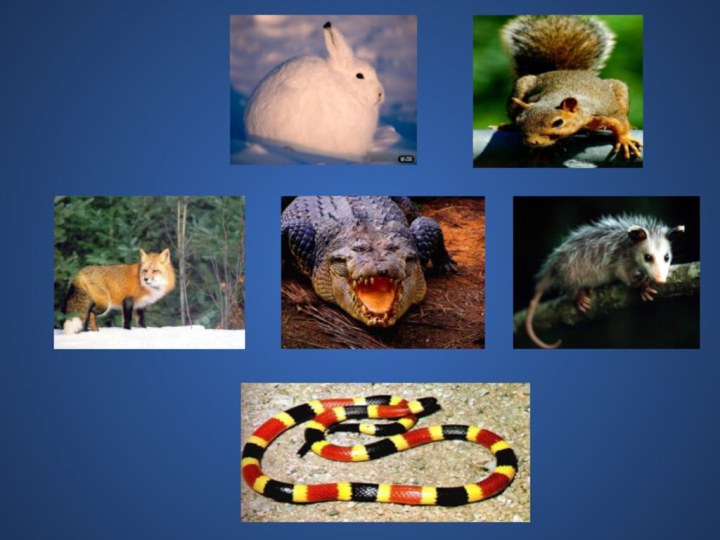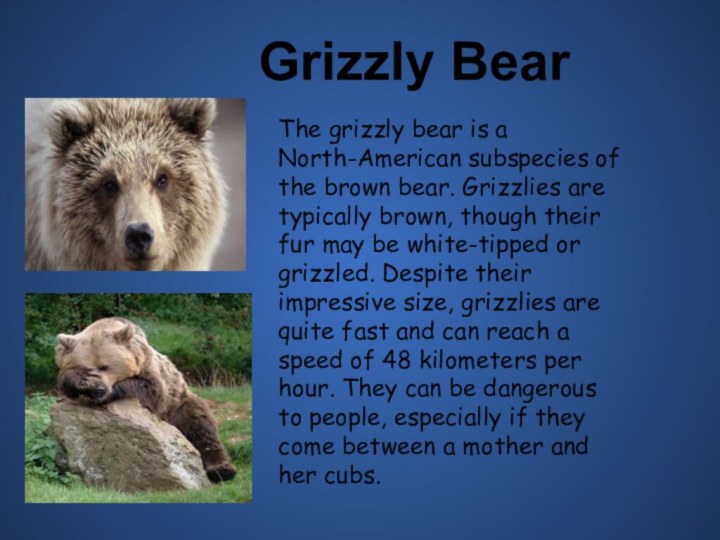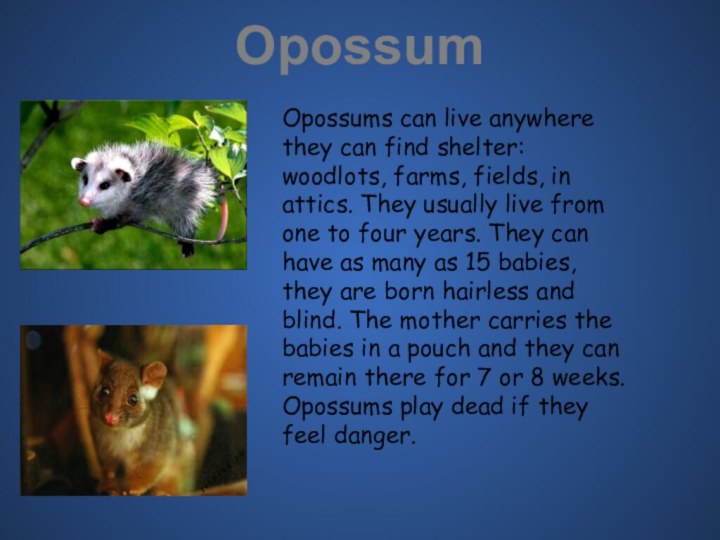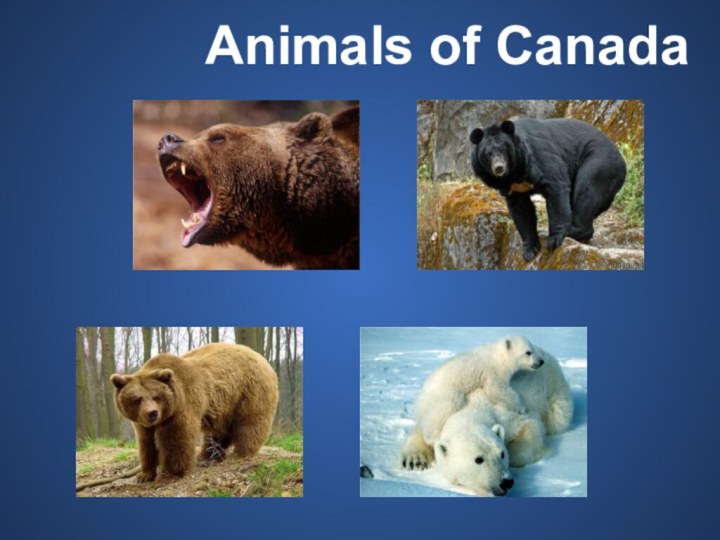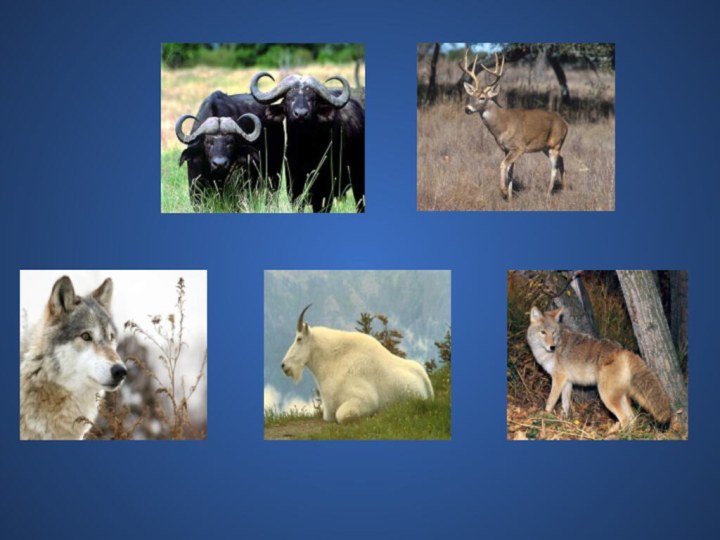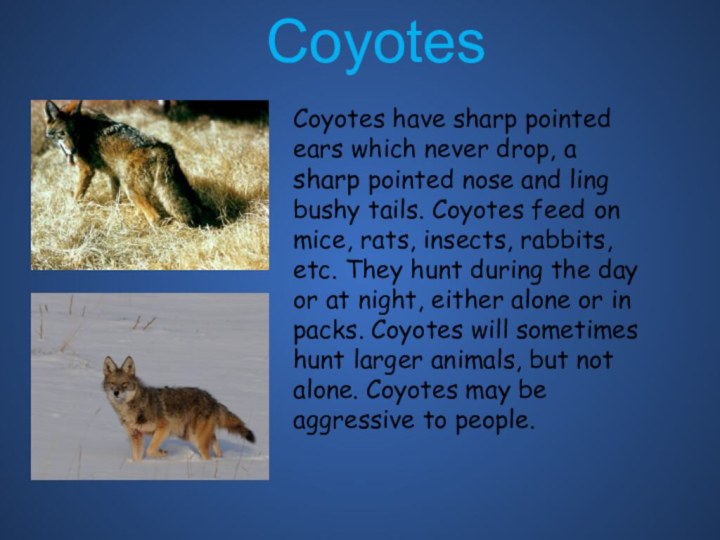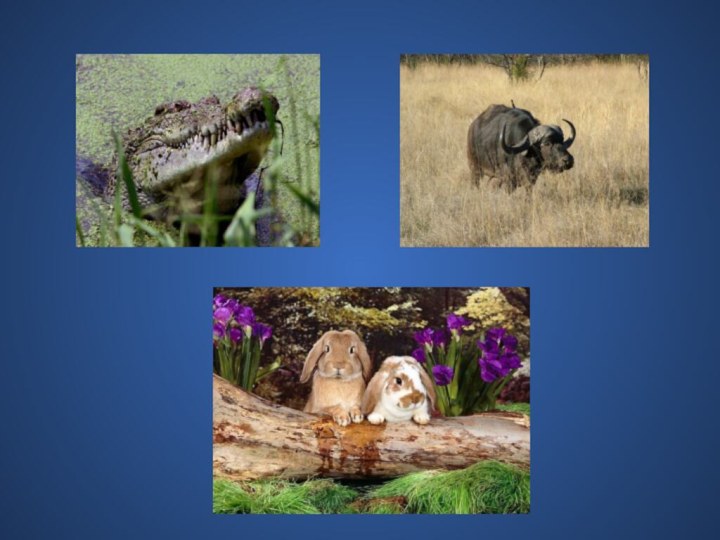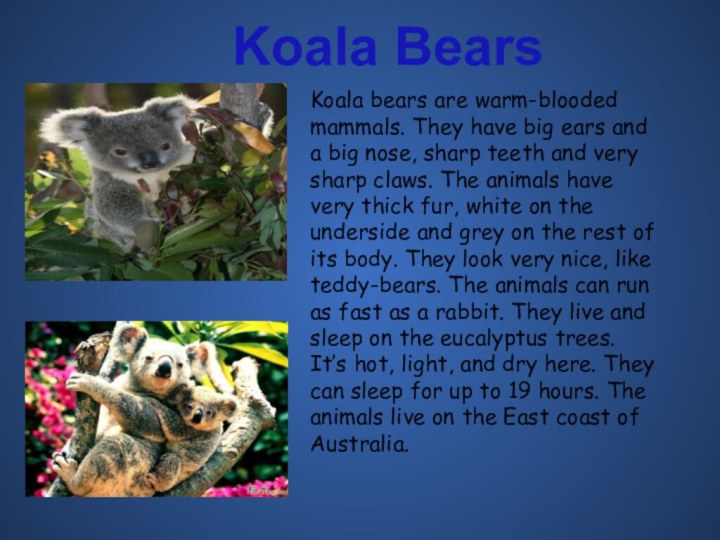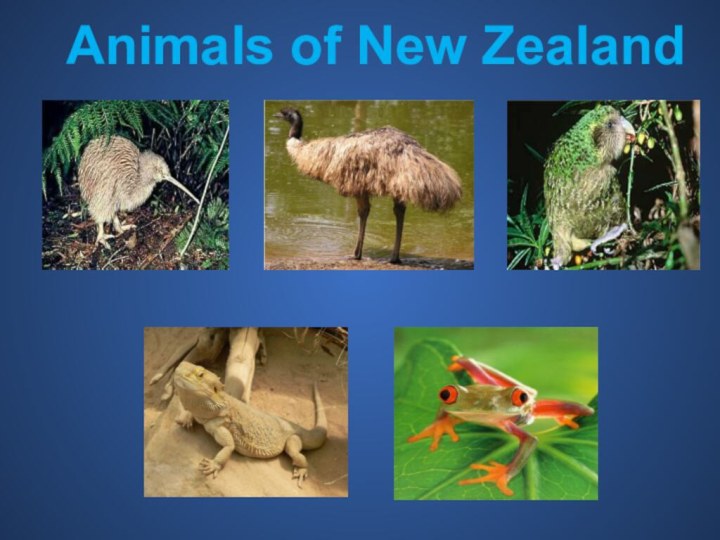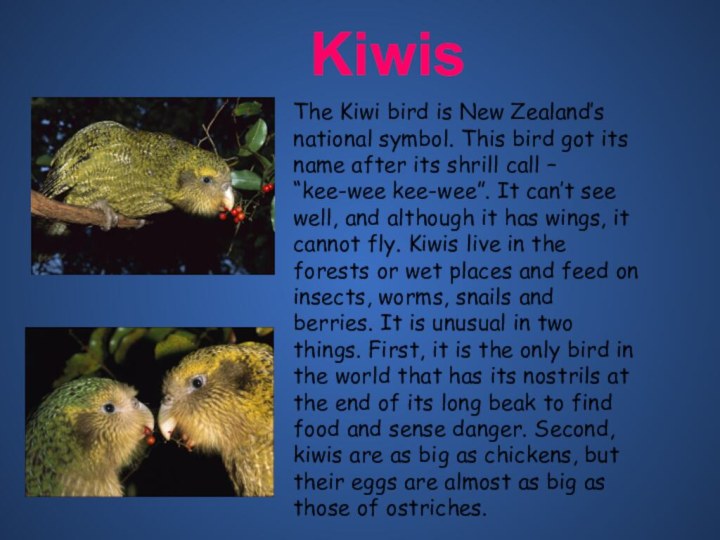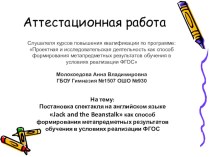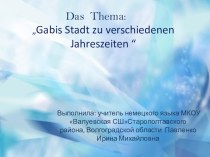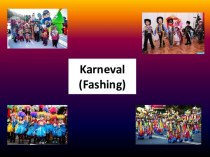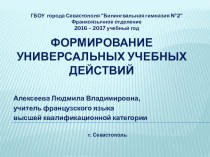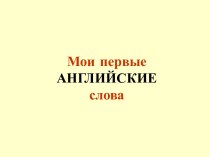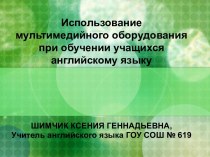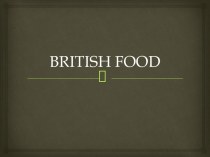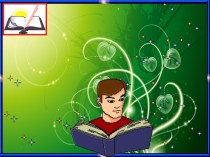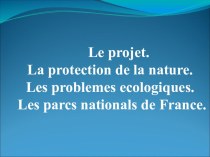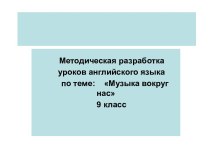Слайд 4
Deer
The six species of deer found in Britain
form an important element of the British flora and
fauna. Deer weigh from 40 to 200 kilograms. They have compact bodies and long powerful legs. Deer are also excellent jumpers and swimmers. They feed on leaves, grass, soft twigs, fruit and mushrooms. All male deer have beautiful antlers.
Слайд 5
Hedgehogs
A hedgehog is a small animal covered with
a thick coat of sharp spines. The hedgehog sleeps
in small burrows or nests of grass and leaves during the day and comes out at night to eat insects. If threatened, the hedgehog rolls into a ball with its spines out for defense. European species appear to be immune to toxins, since they can eat bees and wasps.
Слайд 8
Grizzly Bear
The grizzly bear is a North-American subspecies
of the brown bear. Grizzlies are typically brown, though
their fur may be white-tipped or grizzled. Despite their impressive size, grizzlies are quite fast and can reach a speed of 48 kilometers per hour. They can be dangerous to people, especially if they come between a mother and her cubs.
Слайд 9
Opossum
Opossums can live anywhere they can find shelter:
woodlots, farms, fields, in attics. They usually live from
one to four years. They can have as many as 15 babies, they are born hairless and blind. The mother carries the babies in a pouch and they can remain there for 7 or 8 weeks. Opossums play dead if they feel danger.
Слайд 12
Polar Bear
Polar bears are the biggest carnivores on
land! They’re twice as big as a tiger. They
weigh one ton; have long legs and white fur. Hunting alone for anything from seals to large fish, they use a sense of smell 100 times better than ours. They can run at speeds close to 40 miles per hour. Even though they are good swimmers, the animals prefer to use pieces of ice and as rafts to travel around! The cold, windy, and ice-covered land is the best place for them.
Слайд 13
Coyotes
Coyotes have sharp pointed ears which never drop,
a sharp pointed nose and ling bushy tails. Coyotes
feed on mice, rats, insects, rabbits, etc. They hunt during the day or at night, either alone or in packs. Coyotes will sometimes hunt larger animals, but not alone. Coyotes may be aggressive to people.
Слайд 16
Kangaroos
Kangaroos use their long, powerful hind legs and
feet for hopping and jumping, which, of course, is
their main way of transport. They use their long thick tails for balancing themselves and put most of their weight on their large fourth toe. In Australia, drivers must be careful not to hit these animals that can lead their way across the roads.
Слайд 17
Koala Bears
Koala bears are warm-blooded mammals. They have
big ears and a big nose, sharp teeth and
very sharp claws. The animals have very thick fur, white on the underside and grey on the rest of its body. They look very nice, like teddy-bears. The animals can run as fast as a rabbit. They live and sleep on the eucalyptus trees. It’s hot, light, and dry here. They can sleep for up to 19 hours. The animals live on the East coast of Australia.
Слайд 19
Kiwis
The Kiwi bird is New Zealand’s national symbol.
This bird got its name after its shrill call
– “kee-wee kee-wee”. It can’t see well, and although it has wings, it cannot fly. Kiwis live in the forests or wet places and feed on insects, worms, snails and berries. It is unusual in two things. First, it is the only bird in the world that has its nostrils at the end of its long beak to find food and sense danger. Second, kiwis are as big as chickens, but their eggs are almost as big as those of ostriches.
